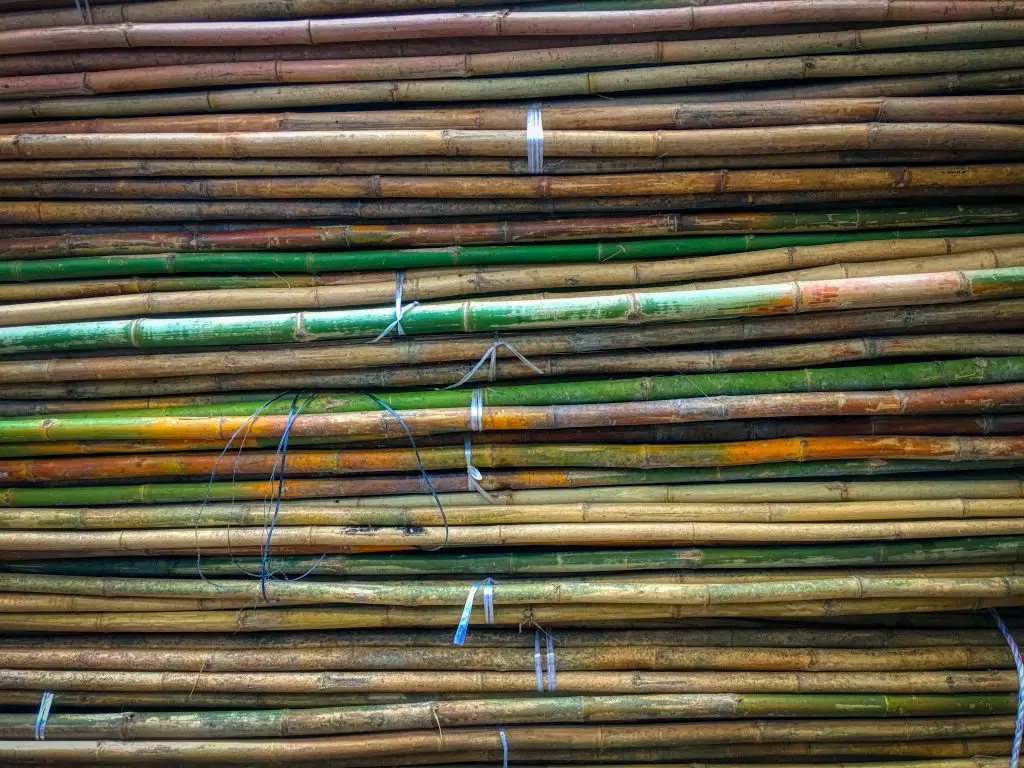Sugar Cane Vs Bamboo: Is There A Difference? Sugar cane and bamboo are both distinct plants from the grass family that have a somewhat similar appearance producing thick stems that can vary in height from 2 m to 6 m in most cases. In the case of Bamboo, these stems are hollow between the nodes where is sugarcane has a solid stem that accumulates sugar between the nodes.
Sugarcane is responsible for approximately 80% of the production volume of sugar in the world and is primarily grown in tropical and subtropical locations.
The remaining 20% of sugar production is produced using sugar beets which are a relative of beetroot and can be grown in a much cooler climate. Sugar beets were used in places like the UK during the Second World War when German U Boats blockaded many imports.
Bamboo, on the other hand, is used for a wide variety of applications which includes fabrics floorboards cutlery and general construction. It is considered to be an extremely sustainable timber because it grows extremely rapidly and can be harvested regularly with limited inputs.
There are a large number of different types of bamboo that are distributed through Asia, India, and the Americas with most species occurring naturally in tropical and subtropical regions. Whereas is sugarcane originated from Papua New Guinea and has subsequently spread to other regions.

About Sugar Cane
As mentioned above sugar came was initially used by the Papuan people as a crop for thousands of years mainly to feed domesticated pigs. Over time the crop spread into the islands of Polynesia to the West, India to the north, and Madagascar.
From here the sugar cane spread into the Mediterranean region and also enter China and Taiwan. In the case of China and Taiwan there was a second species of sugarcane that was domesticated independently and these species were hybridized.
However, much of the early use of sugarcane did not involve the crystallization of the sucrose solution to create the sugar that we’re all familiar with today. This practice was first documented in Northern India and was spread by traders through the Mediterranean around the 8th century and by the 10th century, the practice had become widespread.
Sugarcane was first introduced to the Caribbean by Christopher Columbus on his second voyage where it was grown extensively in this region. It was known to form one side of the trade triangle which included the movement of sugar from the Caribbean to Europe in exchange for manufactured goods and slaves from Africa.
The sugar cane juice itself was converted to raw sugar by boiling houses that were attached directly to the sugar cane plantations in the Caribbean. This practice was carried out by slaves until slavery was abolished within the British Empire in 1833.
Once the slaves were freed many of them did not return to the sugar cane plantations and alternative labor from places like India and China was sourced to continue the sugar production which continues to this day.

About Bamboo
Bamboo has a wider range of species than sugar cane and can be grown in significantly cooler climates. It is a significantly faster growing plant than sugarcane with some varieties being capable of growing 36-inches in a single day.
The other significant difference with bamboo is it can tolerate growing in much more marginal land than sugarcane. These features make it an ideal candidate for helping to address climate change because of its ability to sequester carbon rapidly and produce hardwood significantly faster than old growth forests.
The plant itself is generally divided up into 2 types; clumping bamboo and running bamboo. Running bamboo is notorious for being an invasive weed and has caused significant problems in domestic properties.
Clumping Bamboo is spread by progressively increasing the size of the rhizomes below the soil line but the rate of spread is quite slow. Whereas running bamboo can put out runners that travel several metres in a single year below the ground. However, this is highly dependent upon the particular species and the growing conditions that the plant is being subject to.
When the species produce new canes these canes emerge from the ground at the full diameter and do not expand over time like the trunk of a tree. These canes will reach their full height in most cases within 3 to 4 months during the growing season. Most species will then produce leaves at the internodes in the subsequent seasons.
In terms of where bamboo plants can be grown that is greatly dependent upon the particular variety that is selected. there are some varieties that have evolved in temperate climates and can withstand temperatures as low as -20°F (-29°C) which means that they can be grown in zone 5 or higher.

However, tropical bamboo is not tolerant of frost so if you need to select the variety carefully to ensure that the species is suited to your climatic conditions.
I personally grow bamboo in my backyard and I find it a particularly useful plant to have in the garden because it produces numerous canes which can be used as garden supports. They are also useful as a screening plant for creating a hedge.
I hope you found this article useful, if you have any questions or comments please leave them in the section below.
Relevant Articles
Do Deer Eat Bamboo? And How To Protect It.
What’s The Difference Between Sweet Peas And Green Peas? (What You Need To Know)
What’s The Difference Between A Daisy And A Sunflower?
What Is The Difference Between Dwarf Beans And Climbing Beans?
